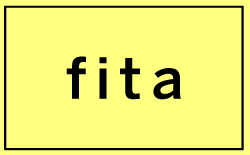FITA Magazine Vol. I / Invisible Atlas
The Peggy Guggenheim Collection
Interview by Francisca Gigante
![]()
Photograph © Archivio Cameraphoto Epoche. Solomon R. Guggenheim Foundation, Venice, Donation, Cassa di Risparmio di Venezia. Peggy Guggenheim in the library of Palazzo Venier dei Leoni, Venice, late 1960s.
The Peggy Guggenheim Collection is one of the most important museums of European and American art of the twentieth century in Italy. It is located in Peggy Guggenheim’s former home, Palazzo Venier dei Leoni, on the Grand Canal in Venice, Italy. As we make way towards the doors designed by the American sculptor Claire Falkenstein, we notice the intricate glittering canals that once took the magnanimous Peggy Guggenheim to all corners of the city in her private gondola, and consecutively to all corners of the world.
Peggy Guggenheim was a woman far ahead of her time. It was the iconic Peggy who encouraged artists to produce the most exquisite artworks, who convened the two artistic currents Surrealism and Abstraction, who helped artists to escape the dreaded Nazi soldiers during World War II in Europe, who opened two accalimed art galleries - the Guggenheim Jeune in London and Art of this Century in New York. The Peggy Guggenheim Collection is part of her legacy in the city of Venice, a place she has fallen in love with over and over again.
The Solomon R. Guggenheim Foundation fulfills the accomplishment of a dream for many students and young graduates in art, art history or related disciplines. Months after months, those who are interested in gaining first-hand experience in a museum continuously apply to meet Peggy’s marvelous art collection. When selected to the International Internship Program at The Peggy Guggenheim Collection, interns are invited to become familiarized with the important collection of modern and contemporary art.
Interns learn from the artworks hanging on the walls, they educate themselves in the museum’s library, they discuss with each other and learn from visitors, they engage in interpretations of the works in the galleries or - if they are fortunate enough to participate in a re-hanging of the collection - in the storage rooms; in sum: they start understanding what is necessary to keep a museum up and running on wooden foundations in the middle of the Venetian lagoon at the head of the Adriatic Sea in northern Italy. For many it is considered an unforgettable life changing experience, as the Education Department of The Peggy Guggenheim Collection reveals.
![]()
![]()
Photographs © Matteo De Fina. The Peggy Guggenheim Collection,
Palazzo Venier dei Leoni, Venice.
The Peggy Guggenheim Collection International Internship Program is considered to be a renowned and important internship aimed at students and young graduates to gain first-hand experience on museum operations. The Internship Program started in 1980. 41 years after, what has changed? And what has remained as it was?
What began in 1980 as an invitation to young adults to assist in the early days of The Peggy Guggenheim Collection has developed into a competitive international internship program, involving the operation of one of the foremost museums of modern art in Italy. It was the first, and still is the only program of its kind in Italy. The work-study program offers an experience as unique and wide-ranging as the museum itself.
The steady expansion of The Peggy Guggenheim Collection from 1980 to today parallels a comparable growth in the internship program. The number of students participating in the internship program has increased from the initial 6 to as many as 30 students per month. In 2019, of approximately 1000 applicants, 157 from 47 different countries were successful.
What has always remained the same throughout decades is the unique opportunity to learn and observe all the aspects of the operation of a small private museum while immersed in the rich cultural environment of Venice and surrounded by passionate people.
![]()
Photograph © Ray Wilson. Purchase Peggy Guggenheim Collection
Peggy Guggenheim in the library of Palazzo Venier dei Leoni, Venice, 1975.
The PGC offers a range of educational programs of the highest quality and educational resources for museum visitors. The Education Department enables the Museum to engage and inspire different types of audiences to look closely and get a better understanding of the artworks on view and in the collection. Which education and public programs are you currently undertaking? Which are the learning experiences that are offered in the museum site and online?
Thanks to its education programs, The Peggy Guggenheim Collection is a resource accessible to its diverse public, and a place for interaction, growth and well-being for all. Adapting to the present pandemic situation, our current educational activity includes for instance such projects as the virtual Kids Day and Art Talks produced by our interns and posted on the social media channels of the museum, allowing a wider public to connect with art and our collection from any place in the world. Another project that has been conducted in these months is Overcoming. Art practice for the new normal. A series of four free workshops led by four artists devoted to public art and social practice, who employ an authentic, credible, and transparent approach to involve a young audience in a process of change and emancipation. The Peggy Guggenheim Collection, with the participation of Swatch Art Peace Hotel, presents a series of four workshops for young adults by internationally renowned artists. The project asks young artists to challenge their own practice by creating workshops which should become virtuous activators of community processes, and catalysts of actions to reappropriate spaces and to redefine social paradigms.
The PGC Internship Program receives approximately 150 international applicants per year. How is the process of acknowledging the reception of applications, reviewing Curriculum Vitae, cover and reference letters, as well as managing the questions and deadlines for each round of applications in the year? What can be done in preparation to the next Internship Program application?
The selection process of the PGC International Internship Program is a very complex and difficult one since we receive a great number of applications every year. In general, the Selection Committee favours candidates who have demonstrated experience working within an art and/or museum context and a desire to pursue a career in the field. Additionally, we highly appreciate the working knowledge of both English and Italian. These are by no means requirements, only characteristics that are looked upon favourably, therefore we recommend future candidates to work on their language skills.
Are there any agreements that the PGC Internship Program has established throughout the years? Do universities have an important role in the selection process of their student-candidates? Which organizations sponsor students in the program? How can a candidate be selected to receive an intern scholarship?
International candidates can individually apply through a selection process that is open twice a year. Once selected to the internship they will obtain a stipend as a contribution to their living expenses. However, The Peggy Guggenheim Collection also collaborates with a number of universities that are listed on the museum’s website, and benefits from excellent candidates selected directly by their universities. The Peggy Guggenheim Collection is open to collaborations with universities, local institutions and charitable organizations.
Accessibility in museum education is key. How is the collection constantly being preserved, taken care of and studied by the interns who are invited to the PGC Internship Program in Venice? How do interns work closely and learn from the museum departments?
One of the advantages of the program is the variety of tasks that the interns are able to experience during the internship period. Apart from their main tasks related to every-day operating of the museum, visitor and education services such as tours and presentations to the public, interns are assigned to particular projects within the museum departments. The internship program also includes activities such as seminars, lectures, educational trips and guided tours specifically planned for the interns to facilitate the practice, dialogue and study of their respective academic and professional skills.
![]()
Photograph © Nicolò Miana. The Peggy Guggenheim Collection,
Palazzo Venier dei Leoni, Venice.
The Peggy Guggenheim Collection
Life Changing International
Internship Program
Interview by Francisca Gigante

Photograph © Archivio Cameraphoto Epoche. Solomon R. Guggenheim Foundation, Venice, Donation, Cassa di Risparmio di Venezia. Peggy Guggenheim in the library of Palazzo Venier dei Leoni, Venice, late 1960s.
The Peggy Guggenheim Collection is one of the most important museums of European and American art of the twentieth century in Italy. It is located in Peggy Guggenheim’s former home, Palazzo Venier dei Leoni, on the Grand Canal in Venice, Italy. As we make way towards the doors designed by the American sculptor Claire Falkenstein, we notice the intricate glittering canals that once took the magnanimous Peggy Guggenheim to all corners of the city in her private gondola, and consecutively to all corners of the world.
Peggy Guggenheim was a woman far ahead of her time. It was the iconic Peggy who encouraged artists to produce the most exquisite artworks, who convened the two artistic currents Surrealism and Abstraction, who helped artists to escape the dreaded Nazi soldiers during World War II in Europe, who opened two accalimed art galleries - the Guggenheim Jeune in London and Art of this Century in New York. The Peggy Guggenheim Collection is part of her legacy in the city of Venice, a place she has fallen in love with over and over again.
The Solomon R. Guggenheim Foundation fulfills the accomplishment of a dream for many students and young graduates in art, art history or related disciplines. Months after months, those who are interested in gaining first-hand experience in a museum continuously apply to meet Peggy’s marvelous art collection. When selected to the International Internship Program at The Peggy Guggenheim Collection, interns are invited to become familiarized with the important collection of modern and contemporary art.
Interns learn from the artworks hanging on the walls, they educate themselves in the museum’s library, they discuss with each other and learn from visitors, they engage in interpretations of the works in the galleries or - if they are fortunate enough to participate in a re-hanging of the collection - in the storage rooms; in sum: they start understanding what is necessary to keep a museum up and running on wooden foundations in the middle of the Venetian lagoon at the head of the Adriatic Sea in northern Italy. For many it is considered an unforgettable life changing experience, as the Education Department of The Peggy Guggenheim Collection reveals.

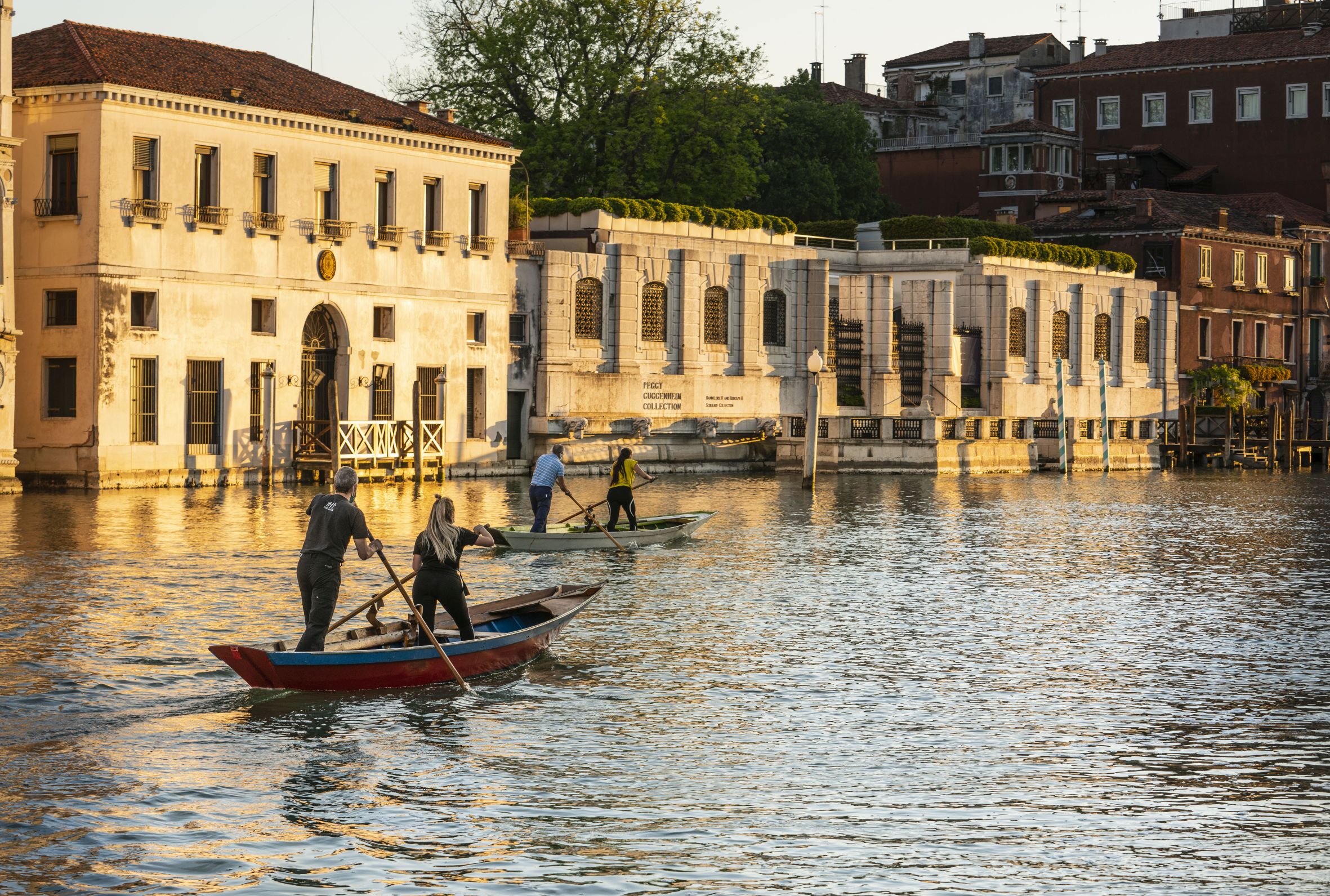
Photographs © Matteo De Fina. The Peggy Guggenheim Collection,
Palazzo Venier dei Leoni, Venice.
The Peggy Guggenheim Collection International Internship Program is considered to be a renowned and important internship aimed at students and young graduates to gain first-hand experience on museum operations. The Internship Program started in 1980. 41 years after, what has changed? And what has remained as it was?
What began in 1980 as an invitation to young adults to assist in the early days of The Peggy Guggenheim Collection has developed into a competitive international internship program, involving the operation of one of the foremost museums of modern art in Italy. It was the first, and still is the only program of its kind in Italy. The work-study program offers an experience as unique and wide-ranging as the museum itself.
The steady expansion of The Peggy Guggenheim Collection from 1980 to today parallels a comparable growth in the internship program. The number of students participating in the internship program has increased from the initial 6 to as many as 30 students per month. In 2019, of approximately 1000 applicants, 157 from 47 different countries were successful.
What has always remained the same throughout decades is the unique opportunity to learn and observe all the aspects of the operation of a small private museum while immersed in the rich cultural environment of Venice and surrounded by passionate people.

Photograph © Ray Wilson. Purchase Peggy Guggenheim Collection
Peggy Guggenheim in the library of Palazzo Venier dei Leoni, Venice, 1975.
The PGC offers a range of educational programs of the highest quality and educational resources for museum visitors. The Education Department enables the Museum to engage and inspire different types of audiences to look closely and get a better understanding of the artworks on view and in the collection. Which education and public programs are you currently undertaking? Which are the learning experiences that are offered in the museum site and online?
Thanks to its education programs, The Peggy Guggenheim Collection is a resource accessible to its diverse public, and a place for interaction, growth and well-being for all. Adapting to the present pandemic situation, our current educational activity includes for instance such projects as the virtual Kids Day and Art Talks produced by our interns and posted on the social media channels of the museum, allowing a wider public to connect with art and our collection from any place in the world. Another project that has been conducted in these months is Overcoming. Art practice for the new normal. A series of four free workshops led by four artists devoted to public art and social practice, who employ an authentic, credible, and transparent approach to involve a young audience in a process of change and emancipation. The Peggy Guggenheim Collection, with the participation of Swatch Art Peace Hotel, presents a series of four workshops for young adults by internationally renowned artists. The project asks young artists to challenge their own practice by creating workshops which should become virtuous activators of community processes, and catalysts of actions to reappropriate spaces and to redefine social paradigms.
The PGC Internship Program receives approximately 150 international applicants per year. How is the process of acknowledging the reception of applications, reviewing Curriculum Vitae, cover and reference letters, as well as managing the questions and deadlines for each round of applications in the year? What can be done in preparation to the next Internship Program application?
The selection process of the PGC International Internship Program is a very complex and difficult one since we receive a great number of applications every year. In general, the Selection Committee favours candidates who have demonstrated experience working within an art and/or museum context and a desire to pursue a career in the field. Additionally, we highly appreciate the working knowledge of both English and Italian. These are by no means requirements, only characteristics that are looked upon favourably, therefore we recommend future candidates to work on their language skills.
Are there any agreements that the PGC Internship Program has established throughout the years? Do universities have an important role in the selection process of their student-candidates? Which organizations sponsor students in the program? How can a candidate be selected to receive an intern scholarship?
International candidates can individually apply through a selection process that is open twice a year. Once selected to the internship they will obtain a stipend as a contribution to their living expenses. However, The Peggy Guggenheim Collection also collaborates with a number of universities that are listed on the museum’s website, and benefits from excellent candidates selected directly by their universities. The Peggy Guggenheim Collection is open to collaborations with universities, local institutions and charitable organizations.
Accessibility in museum education is key. How is the collection constantly being preserved, taken care of and studied by the interns who are invited to the PGC Internship Program in Venice? How do interns work closely and learn from the museum departments?
One of the advantages of the program is the variety of tasks that the interns are able to experience during the internship period. Apart from their main tasks related to every-day operating of the museum, visitor and education services such as tours and presentations to the public, interns are assigned to particular projects within the museum departments. The internship program also includes activities such as seminars, lectures, educational trips and guided tours specifically planned for the interns to facilitate the practice, dialogue and study of their respective academic and professional skills.

Photograph © Nicolò Miana. The Peggy Guggenheim Collection,
Palazzo Venier dei Leoni, Venice.
Fascinating masterpieces of 20th-Century
European and American art are on display
in Peggy Guggenheim’s palazzo rooms, as
if welcomed at her home. Assisting in the
presentation of the collection artworks,
as participating in the meetings with the
Museum Staff and going on monthly trips
planned to cultural and historical sites
around Italy can be a life-changing experience. Given Peggy’s high historical and
artistic heritage, what have been the most
important values you seek to convey?
The Peggy Guggenheim Collection is owned and operated by the Solomon R Guggenheim Foundation. The Foundation’s mission is to promote both understanding and interest in art, architecture and other modern or contemporary artistic expressions, and to collect, conserve and study the art of our times. The Foundation remains faithful to its mission through the realization of important exhibitions, educational programs, research projects, and publications of academic interest with the aim of attracting and developing a wide and international audience thanks to its network of museums and numerous cultural partnerships.
![]()
![]()
![]()
![]()
Photographs © Matteo De Fina. The Peggy Guggenheim Collection,
Palazzo Venier dei Leoni, Venice.
Each person is unique and unrepeatable. However, each intern can bring educational baggage from the country they represent and therefore, help in establishing new bridges in the PGC Internship Program across different cultures. How can being involved in the study of the works in the collection help strengthen the bonds in the team of interns?
One of the advantages of the program is the diversity of people that an intern gets to meet during the internship period. The international internship program brings together people from different cultural and academic backgrounds, which renders one’s experience very rich regarding networking and personal growth. Activities such as seminars, lectures, educational group trips facilitate the practice, dialogue and sharing of their respective academic and professional skills. An intern’s first useful resource at the PGC is the other intern.
![]()
Photograph © Photo Archive Cameraphoto Epoche. Solomon R. Guggenheim Foundation, Venice, Donation, Cassa di Risparmio di Venezia. Peggy Guggenheim in the dining room of Palazzo Venier dei Leoni, Venice, late 1960s.
Celebrating milestones as a team member in the Museum is a never-forget highlight. We understand PGC interns stay in touch years after. These are special connections between colleagues who grow to be friends in the arts. Are these collaborations between interns still cherished to this day? How do you keep in touch with old interns? Can the educational model continue in-between and eventually outside of the walls of Peggy’s Venetian Palazzo after the internship?
In 2010 the museum launched The Peggy Guggenheim Collection Interns Society, a platform for former interns to meet, get back in touch, network and share experiences.
Every two years, on the occasion of the opening week of the Venice Art Biennale, The Peggy Guggenheim Collection Interns Society meets at the museum for “Homecoming,” an evening event exclusively dedicated to Alumni. The reunions are opportunities for many alumni to return ‘home’ after many years and encounter all the fellow interns from around the world. These meetings, as well as the internship experience, usually finish with big life projects and collaborations in between people and countries.
![]()
![]()
Photographs © Matteo De Fina. The Peggy Guggenheim Collection,
Palazzo Venier dei Leoni, Venice.
Learning from the past to plan the future ahead and go beyond borders was one of Peggy’s life mottos. What makes the PGC Internship Program unique? And what can we expect from the following educational projects at the PGC that are coming soon in the year ahead?
Everyone who partook in the PGC Internship Program says that it was life changing.
Lasting one, two or three months according to the candidate’s availability, it is a learning experience that allows students to gain practical experience of museum operations and mature within a group of other international art enthusiasts that share the same interests. One of the advantages of the program is the variety of tasks that the interns are able to experience during the internship period which is the reason no one is assigned to a single department or project.
The educational department is improving all the remote programs and building strong relationships with other museums and institutions that are present in Venice but also in Italy. We are working really close with the education departments of the other Guggenheim as we have never done before, developing projects and activities. We hope to further improve all the accessibility programs and to create more programs for teens and young adults.
![]()
Photograph © Cameraphoto Epoche Archive. Solomon R. Guggenheim Foundation, Venice, Donation, Cassa di Risparmio di Venezia. Peggy Guggenheim on the steps of the terrace overlooking the Grand Canal, during the first exibition she organized at Palazzo Venier dei Leoni, Venice, September 1949.
The interview to The Peggy Guggenheim Collection Education Department was published on pages 140 to 146 in the Brickwork chapter of FITA Magazine Vol. I / Invisible Atlas dedicated to the city of Venice.
The Peggy Guggenheim Collection is owned and operated by the Solomon R Guggenheim Foundation. The Foundation’s mission is to promote both understanding and interest in art, architecture and other modern or contemporary artistic expressions, and to collect, conserve and study the art of our times. The Foundation remains faithful to its mission through the realization of important exhibitions, educational programs, research projects, and publications of academic interest with the aim of attracting and developing a wide and international audience thanks to its network of museums and numerous cultural partnerships.
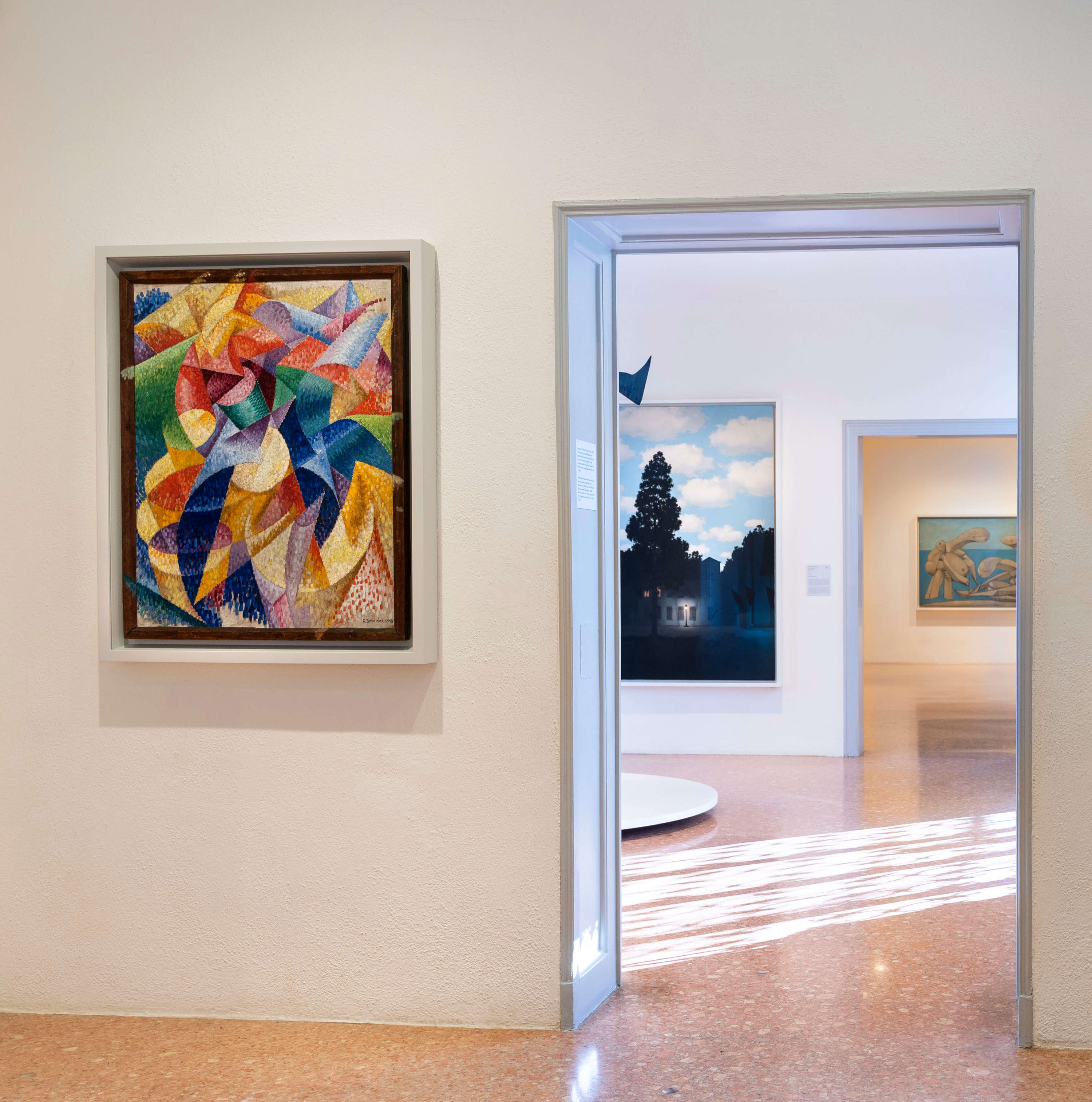
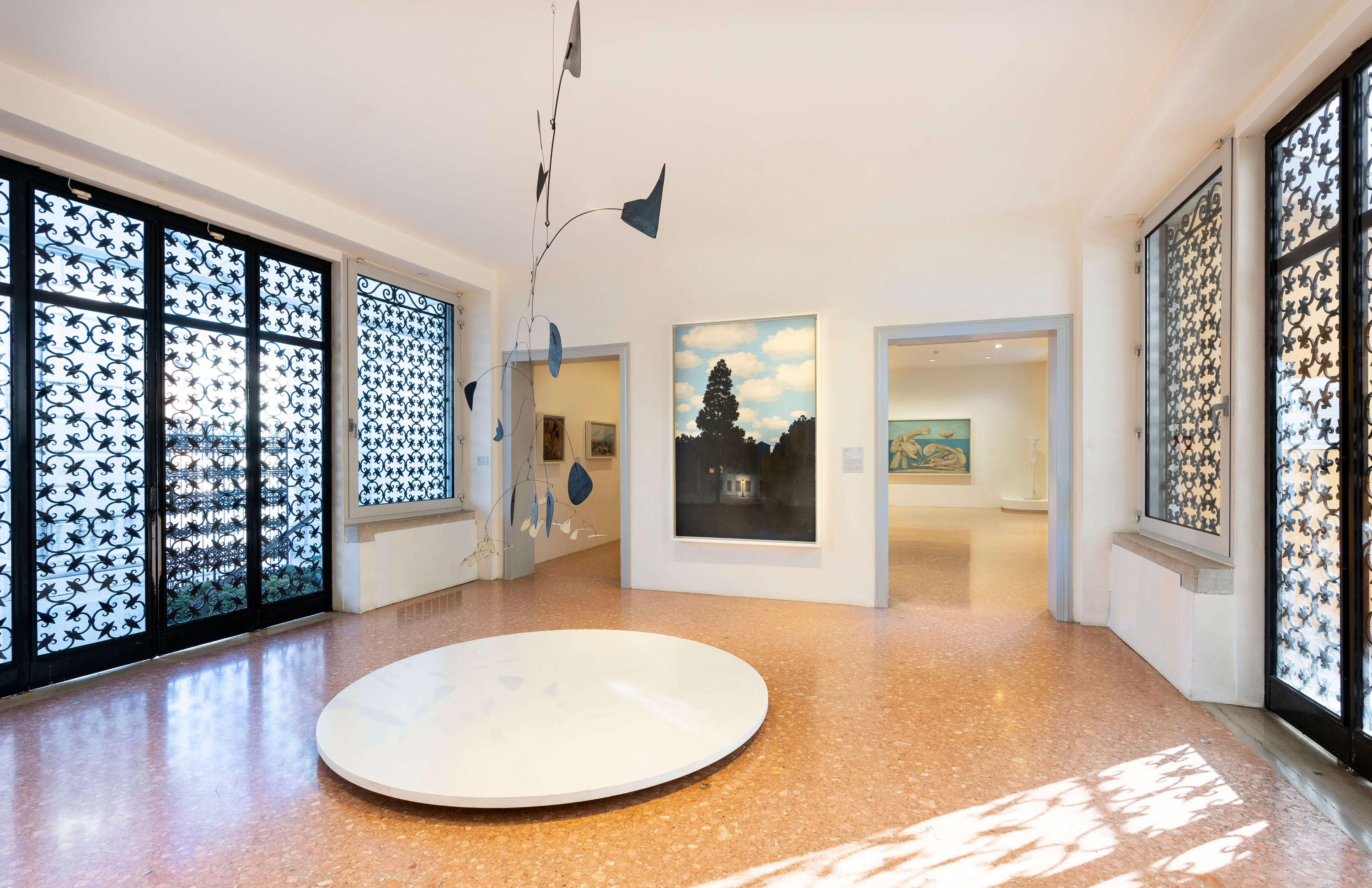
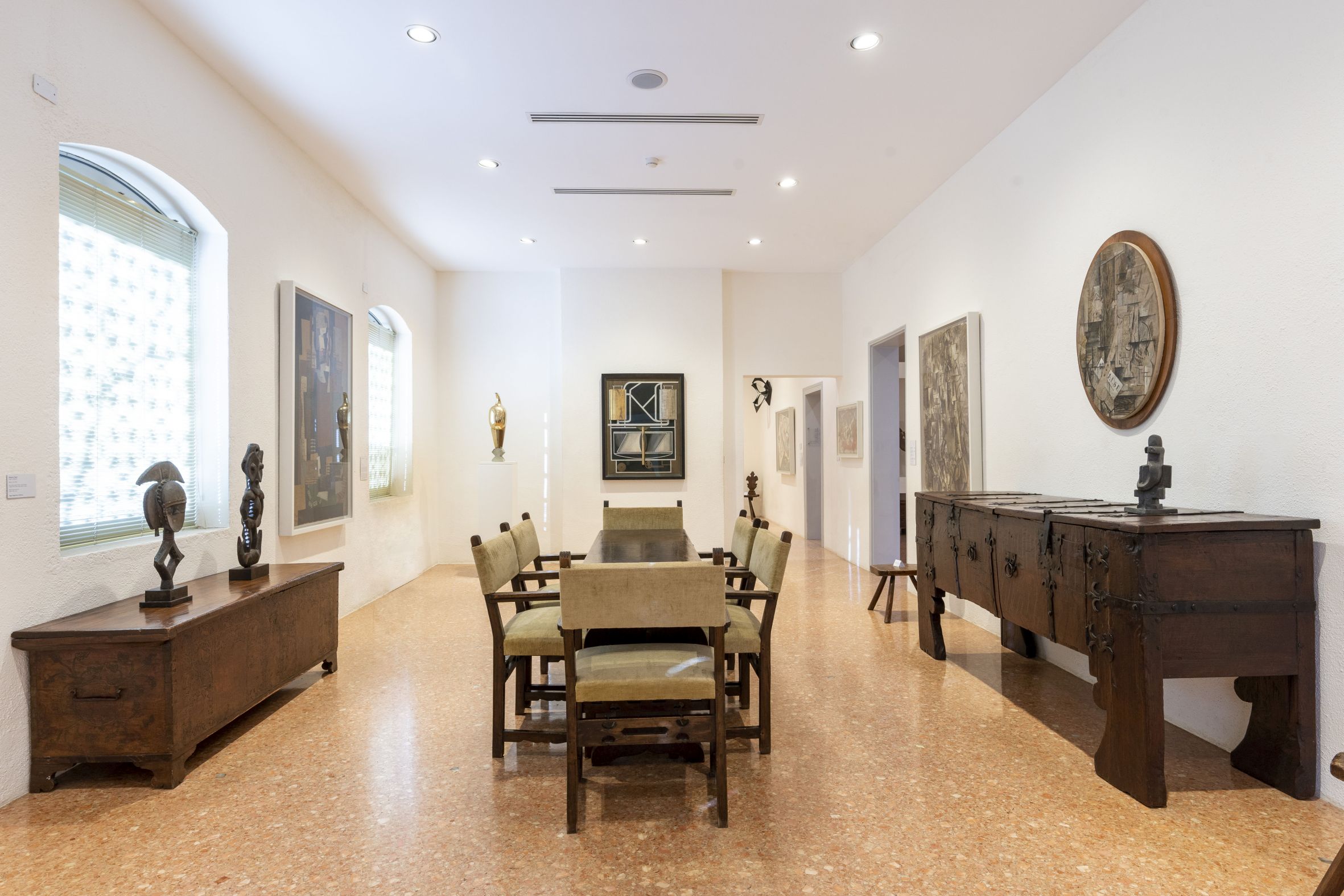

Photographs © Matteo De Fina. The Peggy Guggenheim Collection,
Palazzo Venier dei Leoni, Venice.
Each person is unique and unrepeatable. However, each intern can bring educational baggage from the country they represent and therefore, help in establishing new bridges in the PGC Internship Program across different cultures. How can being involved in the study of the works in the collection help strengthen the bonds in the team of interns?
One of the advantages of the program is the diversity of people that an intern gets to meet during the internship period. The international internship program brings together people from different cultural and academic backgrounds, which renders one’s experience very rich regarding networking and personal growth. Activities such as seminars, lectures, educational group trips facilitate the practice, dialogue and sharing of their respective academic and professional skills. An intern’s first useful resource at the PGC is the other intern.

Photograph © Photo Archive Cameraphoto Epoche. Solomon R. Guggenheim Foundation, Venice, Donation, Cassa di Risparmio di Venezia. Peggy Guggenheim in the dining room of Palazzo Venier dei Leoni, Venice, late 1960s.
Celebrating milestones as a team member in the Museum is a never-forget highlight. We understand PGC interns stay in touch years after. These are special connections between colleagues who grow to be friends in the arts. Are these collaborations between interns still cherished to this day? How do you keep in touch with old interns? Can the educational model continue in-between and eventually outside of the walls of Peggy’s Venetian Palazzo after the internship?
In 2010 the museum launched The Peggy Guggenheim Collection Interns Society, a platform for former interns to meet, get back in touch, network and share experiences.
Every two years, on the occasion of the opening week of the Venice Art Biennale, The Peggy Guggenheim Collection Interns Society meets at the museum for “Homecoming,” an evening event exclusively dedicated to Alumni. The reunions are opportunities for many alumni to return ‘home’ after many years and encounter all the fellow interns from around the world. These meetings, as well as the internship experience, usually finish with big life projects and collaborations in between people and countries.

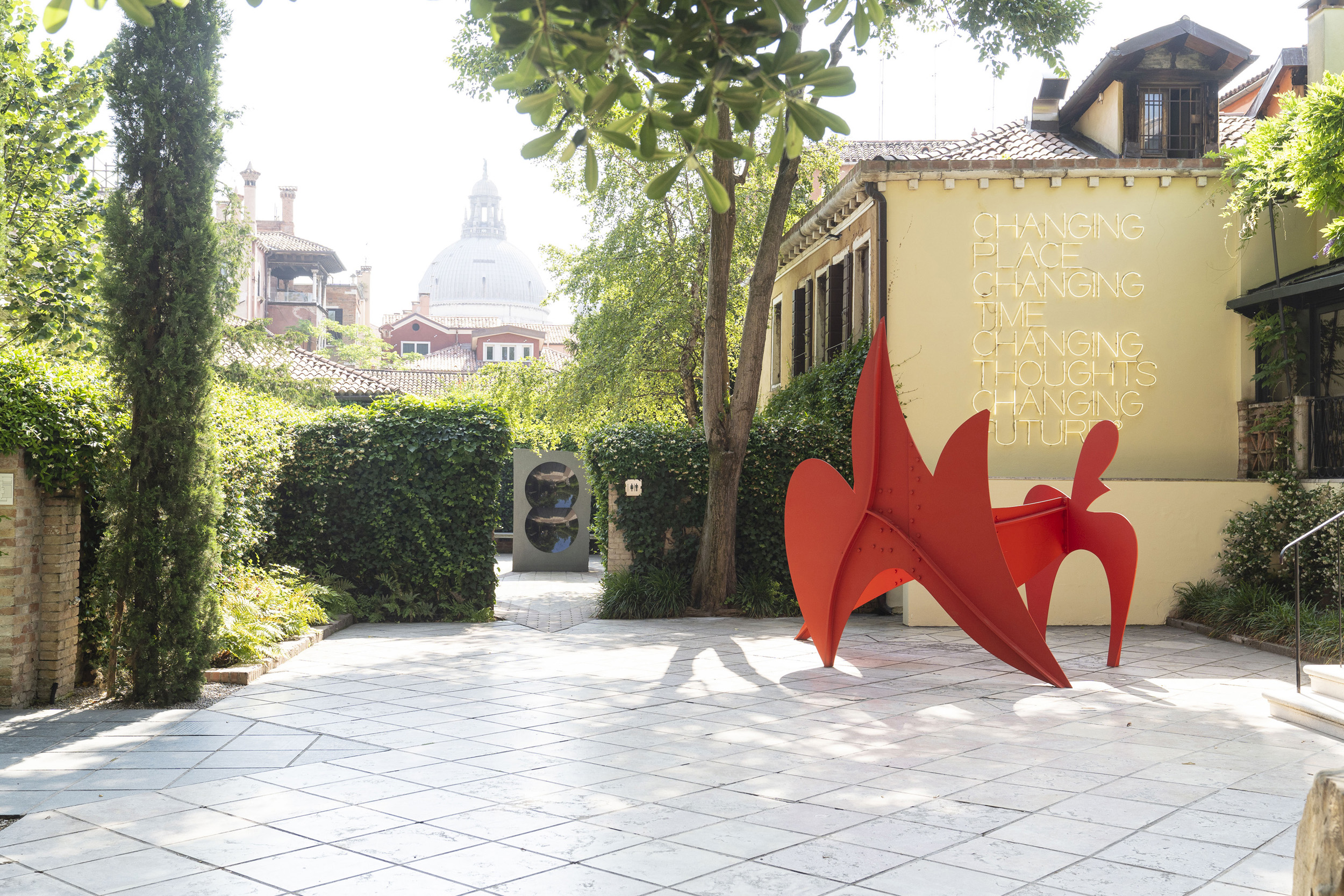
Photographs © Matteo De Fina. The Peggy Guggenheim Collection,
Palazzo Venier dei Leoni, Venice.
Learning from the past to plan the future ahead and go beyond borders was one of Peggy’s life mottos. What makes the PGC Internship Program unique? And what can we expect from the following educational projects at the PGC that are coming soon in the year ahead?
Everyone who partook in the PGC Internship Program says that it was life changing.
Lasting one, two or three months according to the candidate’s availability, it is a learning experience that allows students to gain practical experience of museum operations and mature within a group of other international art enthusiasts that share the same interests. One of the advantages of the program is the variety of tasks that the interns are able to experience during the internship period which is the reason no one is assigned to a single department or project.
The educational department is improving all the remote programs and building strong relationships with other museums and institutions that are present in Venice but also in Italy. We are working really close with the education departments of the other Guggenheim as we have never done before, developing projects and activities. We hope to further improve all the accessibility programs and to create more programs for teens and young adults.

Photograph © Cameraphoto Epoche Archive. Solomon R. Guggenheim Foundation, Venice, Donation, Cassa di Risparmio di Venezia. Peggy Guggenheim on the steps of the terrace overlooking the Grand Canal, during the first exibition she organized at Palazzo Venier dei Leoni, Venice, September 1949.
The interview to The Peggy Guggenheim Collection Education Department was published on pages 140 to 146 in the Brickwork chapter of FITA Magazine Vol. I / Invisible Atlas dedicated to the city of Venice.
